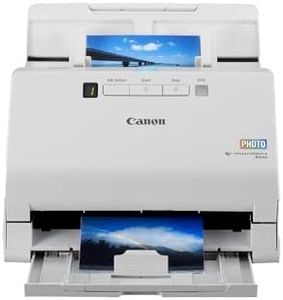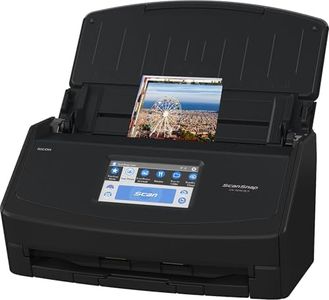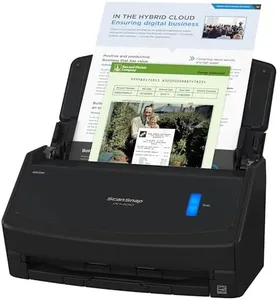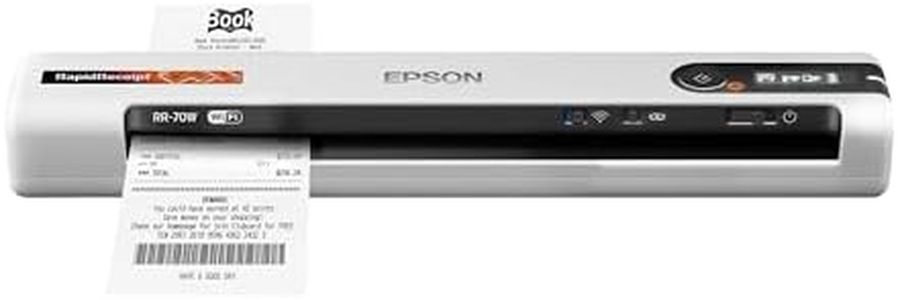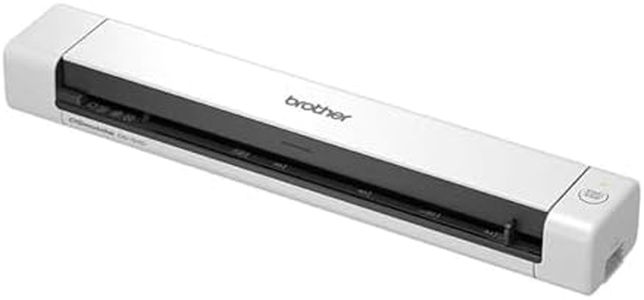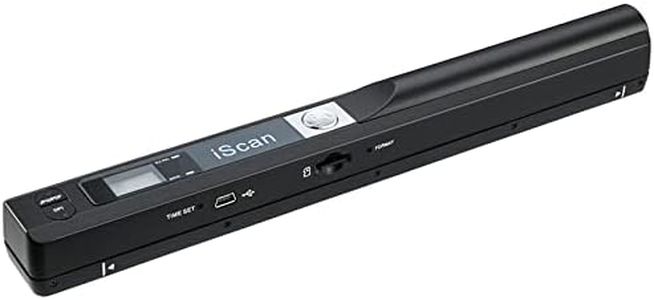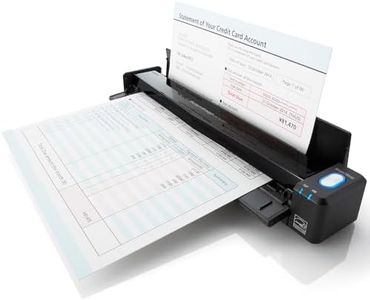We Use CookiesWe use cookies to enhance the security, performance,
functionality and for analytical and promotional activities. By continuing to browse this site you
are agreeing to our privacy policy
10 Best Portable Receipt Scanners
From leading brands and best sellers available on the web.Buying Guide for the Best Portable Receipt Scanners
When choosing a portable receipt scanner, your main goal is to find a device that meets your needs for capturing, storing, and organizing receipts on the go. Consider how and where you’ll use the scanner—will you need it in the car, at client sites, or just for occasional use at home? Think about how much you scan and whether you want to quickly share digital receipts with cloud services or accounting software. Focusing on key features will help you choose a scanner that fits your work style and keeps your finances organized.Scan SpeedScan speed is the amount of time the scanner takes to process a receipt. It is usually measured in pages per minute (ppm). Faster speeds can be beneficial if you need to scan large batches of receipts, saving you time. Portable receipt scanners generally offer a range between about 5 to 15 pages per minute. For light personal use, a lower speed is sufficient. However, if you regularly handle lots of receipts or want to complete your scanning tasks quickly, a higher speed can make your workflow more efficient.
Size and PortabilitySize and portability refer to how compact and lightweight the scanner is. Smaller, lighter scanners are easier to carry in your bag or even a pocket, making them ideal for frequent travelers or those who need to scan on the go. Larger models might offer more features or better durability but can be less convenient to transport. If you plan to use the scanner outside your home or office a lot, prioritize compactness and a lightweight design.
Power SourceThe power source determines how the scanner is powered—typically either via USB connection, rechargeable battery, or standard batteries. USB-powered scanners are great if you often scan near a computer. Battery-powered models give you flexibility and full portability, perfect for scanning where outlets are not readily available. If you travel or work in places without easy access to electricity, choose a model with a rechargeable battery, so you can keep scanning without interruptions.
Maximum Scan ResolutionMaximum scan resolution indicates how detailed the scanned image will be, measured in dots per inch (dpi). Higher dpi means clearer, sharper images, which can be useful for capturing fine print or faded receipts. For general receipt scanning, resolutions in the 300–600 dpi range are typically sufficient. If you anticipate scanning other types of documents or need to capture receipts with poor print quality, consider a model that allows higher resolutions.
Connectivity OptionsConnectivity options are the ways you can connect the scanner to devices such as computers, tablets, or smartphones. Common methods include USB cables, Wi-Fi, Bluetooth, or even memory cards. If you want to easily transfer scans to your devices or cloud storage without plugging in, look for Wi-Fi or Bluetooth support. For straightforward and secure transfers, USB can be sufficient. Choose based on your typical workflow and whether you need instant access to your scanned files.
Document Feed TypeDocument feed type refers to how receipts are fed into the scanner. Some portable scanners use manual single-sheet feeding, while others use automatic document feeders (ADF) that let you load multiple receipts at once. Manual feeds are usually fine for occasional or low-volume scanning, while an ADF can be very helpful if you need to process stacks of receipts quickly and hands-free. Think about how many receipts you typically need to scan in one session.
Software CompatibilitySoftware compatibility covers the applications and platforms the scanner can work with, like operating systems, receipt management, or accounting software. Many scanners come with their own organizing software and also support connection to popular cloud services. If you intend to export or organize receipts digitally, ensure the scanner has software that suits your needs and syncs with your preferred bookkeeping or expense tracking apps.
Supported Document SizesSupported document sizes indicate the range of paper types and sizes the scanner can handle, from small receipts to larger documents like invoices. Some portable scanners only scan small receipts, while others can also handle business cards, photos, or letter-size pages. Consider the variety of documents you may need to scan and make sure your chosen scanner accommodates them.
